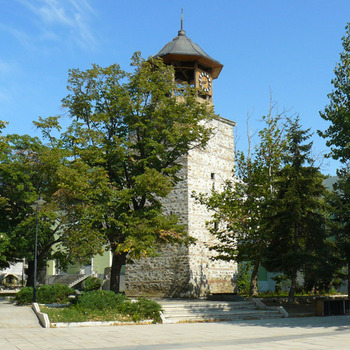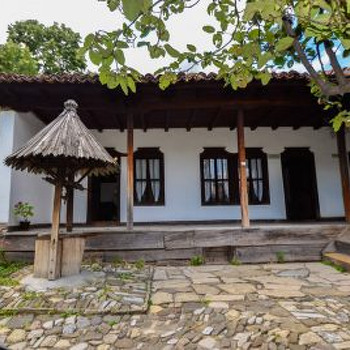Late antique and medieval fortress Tuida
Overview
In 1982, large-scale excavations began in the Hisarlaka area in Sliven. During the archeological excavations an epigraphic monument with an inscription was discovered, from which the ancient name of the settlement in Sliven - Tuida is established. The inscription reads: "Julia Marcia and her husband Aurelius Theopompus, the city councilor, placed this monument in gratitude (this monument) at the Tuida market." According to palaeographic data, the inscription dates back to the beginning of the III century. From it we learn that on the territory of today's Sliven there was a settlement - marketplace (emporion), center of agricultural activity and trade. In this market there is a sanctuary with a temple dedicated to Zeus Okonenski. In the middle of the 4th century the fortress was built in Hisarlaka in Sliven. It covers an area of 40 decares and according to the plan and construction equipment ranks among the monuments built in the traditions of ancient military construction. During this period the large three-nave basilica was built in the fortification. At the end of the 5th - beginning of the 6th century the fortification was rebuilt by Emperor Anastasius. It is known that under this ruler began intensive construction of fortresses in the Balkan territories of the empire. The fortress was built almost from the ground up, but its layout and appearance have been preserved. Additional facilities are added to the erected fortress wall - stairs, canals, aqueducts. The interior of the fortification is densely built up with buildings of various functions, sizes, plans and techniques. Then the early Christian complex was formed, restoring the destroyed large basilica, and to the southeast of it rises an autonomous baptistery with a complex plan and a mosaic colorful floor. Procopius of Caesarea reported in "On the Constructions" that during the reign of Justinian I the fortress walls of the city of Tsoida were repaired. In the earliest diocesan lists the so-called Epiphanius' list is the mentioned episcopal center Tsoida subordinated to the metropolitanate of Adrianople. This information is supported by the discovered early Christian complex within the fortress. Construction continues outside the fortress walls. To the south of the fortification is a large three-nave basilica, which serves the population outside the fortress. The settlement in its fortified part is relatively well developed. There is a water supply and sewerage system, large public buildings. A passage and an underground tunnel have been built, providing additional opportunities for water supply from the Novoselska River. There was an economic recovery during this period, expressed in a lively circulation of coins, numerous finds of handicrafts and luxury. At the end of the VIII - beginning of the IX century the hill was inhabited again. The new inhabitants do not comply with the old buildings of the fortress. Their homes are cut into the unpaved embankments formed during the destruction of the fortress walls. The walls of the old fortress are probably preserved at a considerable height, being repaired and used as intended. The old towers and gates are used, although their floor levels are raised and not cleared to their original floor level. Entire buildings and facilities inside the fortress remain under a thick layer of destruction - the baptistery, the choreography, the administrative building, the building with the underground tunnel. Over time, the fortress underwent construction work related to its improvement. From the north, a water pipeline was built in front of the northern gate, and stone stairs were attached to the northern and eastern walls. Bricks with an incised old Bulgarian sign І Y І were found. During excavations, a molybdenum of Prince Boris-Mikhail dating back to 870 was discovered, a marble facing slab with embossed plant decoration, probably made in one of the sculptural studios of Veliki Preslav for representative buildings. Life in the fortress continued even after Bulgaria fell under Byzantine rule. At the beginning of the 13th century, life in the fortress in Sliven was interrupted forever. Within the features of the old fortress, after its abandonment, only the necropolis around a small cemetery church built on the embankment covering the monolithic early Byzantine administrative building continues to function.
Recommended
Sliven Art Gallery; Hadji Dimitar House Museum; Sliven Life House Museum; Dobri Chintulov House-Museum; National Museum of Textile Industry;


 Bulgarian
Bulgarian Romanian
Romanian




